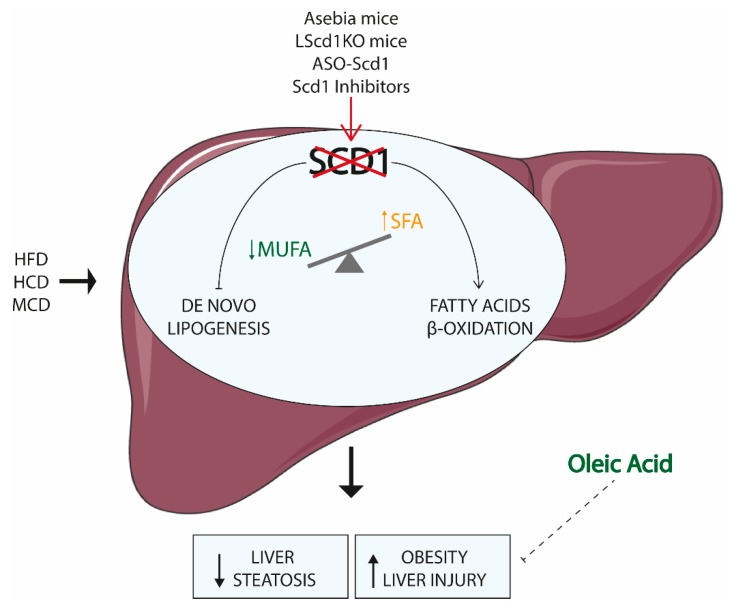Figure 3.
SCD1 inhibition in non-alcholic fatty liver disease (NAFLD). Different methodologies have been used to suppress the stearoyl CoA desaturase 1 (SCD1) activity in the liver, ranging from tissue specific mouse model (LSCD1KO) to Asebia mice, homozygous for naturally occurred mutation which result in the lack of SCD1, to specific inhibitor or antisense oligonucleotide (ASO). At the same time, different disease models have been employed to dissect the role of SCD1 in hepatic disorders. The main one consisted in diet administration, such as a high fat diet (HFD), high carbohydrates diet (HCD) and methionine-choline deficient diet (MCD). The hepatic suppression of SCD1 expression resulted in an altered saturated (SFA) to monounsaturated fatty acid (MUFA) ratio, with the concomitant decreased de novo lipogenesis programs and increased fatty acids β-oxidation pathways. Although these animals are protected from liver steatosis, they normally display liver injury, which is promptly rescued by oleic acid endogenous (from other tissues, such as intestine or white adipose tissue) or exogenous (from diet) supplementation.

